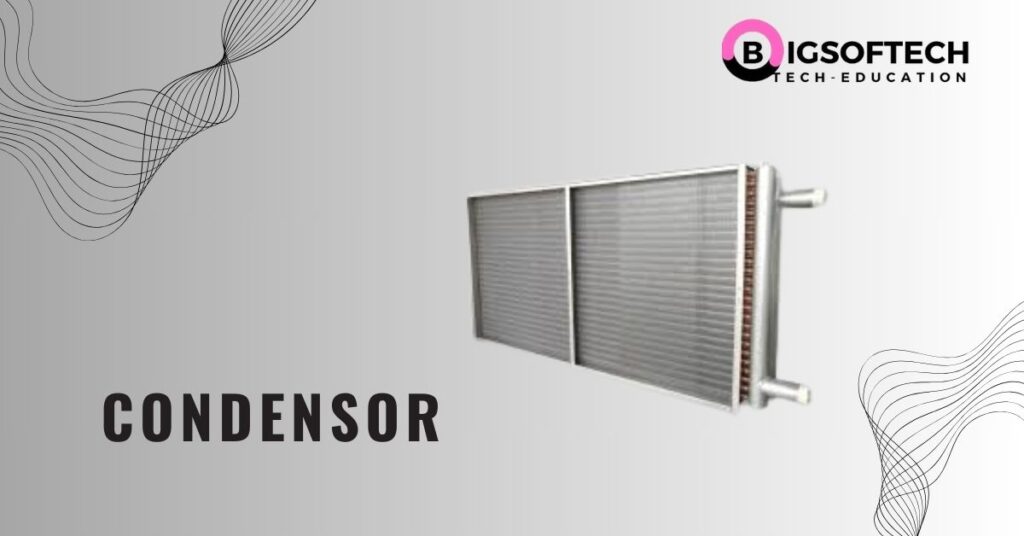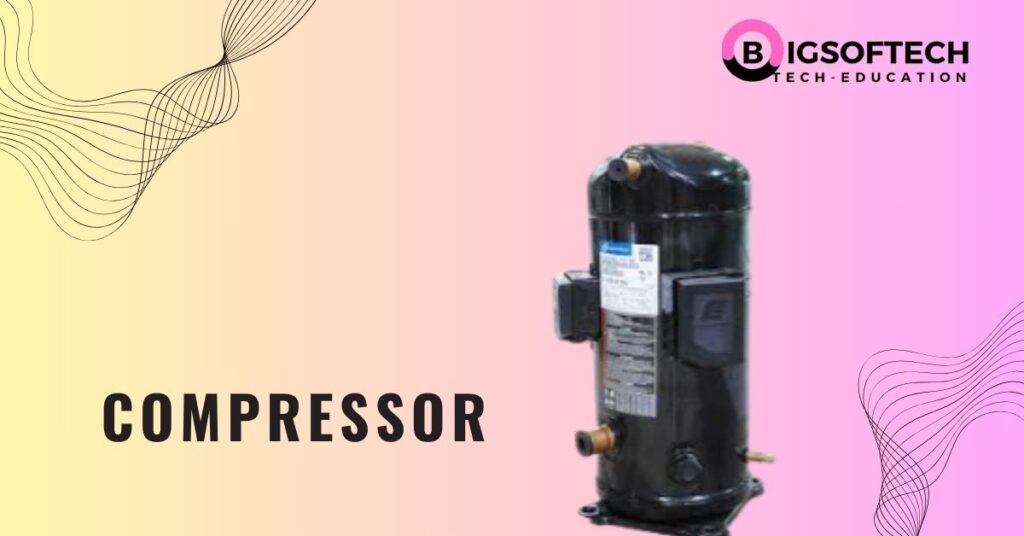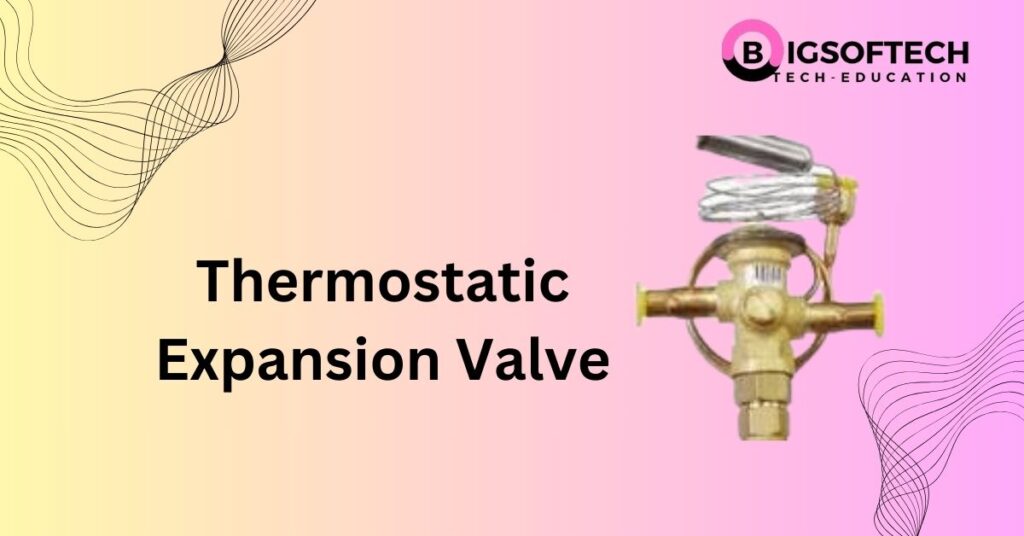What is condenser? A condenser is a crucial component in various systems and industries, playing a vital role in converting gas or vapor into a liquid. But what exactly is a condenser, and why is it so important? In this comprehensive guide, we will explore the fundamental principles of what is condenser, its various types, and its diverse applications. Whether you are delving into HVAC systems, refrigeration, or power plants, understanding the functionality and significance of condensers can greatly enhance your knowledge and efficiency in these fields. Discover how condensers work, the different types available, and their indispensable role in modern technology and industrial processes.
What is Condenser?
A condenser is a device used to convert gas or vapor into a liquid. This process typically involves cooling the gas, causing it to lose energy and transition into its liquid form. Condensers are commonly found in systems such as air conditioning, refrigeration, and power plants, where they play a crucial role in regulating temperature and facilitating energy efficiency. By removing heat from the gas and releasing it into the surrounding environment, condensers help maintain optimal operational conditions and improve overall system performance.
Importance of condensers in various industries
Condensers play a pivotal role in a wide range of industries, significantly impacting efficiency, performance, and sustainability. Here’s a look at their importance across various sectors:
1. HVAC (Heating, Ventilation, and Air Conditioning)
In HVAC systems, condensers are essential for maintaining comfortable indoor climates. By efficiently removing heat from the refrigerant, condensers ensure effective cooling, contributing to energy-efficient air conditioning systems. This is crucial for residential, commercial, and industrial buildings, where temperature control is vital for comfort and productivity.
2. Refrigeration
In refrigeration, condensers are critical for preserving food and other perishable goods. They help maintain low temperatures in refrigerators and freezers by converting refrigerant gas back into liquid form, ensuring consistent cooling. This is essential for both domestic appliances and large-scale industrial refrigeration systems used in supermarkets, cold storage facilities, and food processing plants.
3. Power Plants
In power generation, especially in thermal and nuclear power plants, condensers are used to convert exhaust steam from turbines back into water. This process is crucial for maintaining the efficiency of the power cycle and ensuring a continuous supply of water for steam generation. Effective condensation in power plants leads to better energy conversion rates and reduces operational costs.
4.Chemical Processing
In the chemical industry, condensers are vital for various processes, including distillation and condensation reactions. They are used to condense vaporized chemicals back into liquid form, enabling precise control over chemical reactions and ensuring the purity of the final product. This is crucial for the production of pharmaceuticals, petrochemicals, and other chemical products.
5. Environmental Control
In environmental control systems, such as those used in data centers, condensers are essential for managing heat loads and maintaining optimal operating conditions for sensitive equipment. Efficient cooling provided by condensers helps prevent overheating and ensures the reliability and longevity of critical infrastructure.
6. Marine Applications
In marine engineering, condensers are used in shipboard HVAC and refrigeration systems. They ensure the efficient operation of cooling systems in the challenging marine environment, contributing to the comfort and safety of crew and passengers. Condensers, by enabling effective heat exchange and temperature control, are indispensable across these varied industries. Their ability to convert gas to liquid efficiently not only enhances system performance but also promotes energy efficiency and environmental sustainability.
Types of Condensers
Condensers are classified into several types based on their cooling methods and applications. Here’s an overview of the main types of condensers:
1. Air-Cooled Condensers
Air-cooled condensers use ambient air to cool and condense the refrigerant. They consist of a series of coils or fins through which the refrigerant flows, and fans that blow air over these coils to facilitate heat exchange.
Applications:
These are commonly used in residential and commercial air conditioning systems, small-scale refrigeration units, and HVAC systems.
Advantages:
- Simple design and easy installation.
- Low maintenance requirements.
No need for a water source, making them suitable for areas with water scarcity.
Disadvantages
- Less efficient compared to water-cooled condensers.
- Performance can be affected by ambient temperature.
2. Water-Cooled Condensers
Water-cooled condensers use water as the cooling medium. They typically involve a shell-and-tube design where the refrigerant flows through a series of tubes while water flows over these tubes, absorbing heat from the refrigerant.
Applications: Commonly found in large commercial buildings, industrial facilities, and power plants.
Advantages:
- More efficient heat transfer compared to air-cooled condensers.
- Stable performance regardless of ambient air temperature.
Disadvantages:
- Requires a constant water supply and water treatment to prevent scaling and corrosion.
- Higher installation and maintenance costs.
3. Evaporative Condensers
Evaporative condensers combine elements of both air-cooled and water-cooled systems. They use a water spray over coils and a fan to move air through the system, enhancing the cooling effect through evaporation.
Applications: Ideal for industrial settings where high efficiency is required, such as in refrigeration plants, chemical processing, and large HVAC systems.
Advantages
- High efficiency due to the combined cooling methods.
- Lower water consumption compared to water-cooled systems.
Disadvantages:
- More complex design and higher maintenance requirements.
- Potential for water treatment issues similar to water-cooled condensers.
How Condensers Work
Condensers play a crucial role in various cooling and heating systems by converting gas or vapor into a liquid. This process involves several key steps and principles, which are fundamental to understanding how condensers work.
Basic Working Principle
Condensers operate on the principle of heat transfer. The primary goal is to remove heat from the gas or vapor, causing it to cool and change its state to a liquid. Here’s a step-by-step explanation of how condensers achieve this:
Introduction of Hot Vapor
The hot gas or vapor enters the condenser from a high-temperature area, such as the output of a compressor in refrigeration systems or the exhaust of a steam turbine in power plants.
Heat Transfer Mechanism:
The condenser provides a medium (air, water, or a combination) that absorbs heat from the vapor. This medium is typically cooler than the vapor, facilitating heat transfer.
Condensation
As the vapor loses heat, its temperature drops. When it reaches its dew point, the vapor begins to condense into a liquid. This phase change releases latent heat, which is absorbed by the cooling medium.
Heat Dispersion
The absorbed heat is then dissipated into the environment. In air-cooled condensers, fans blow air across coils to disperse the heat. In water-cooled condensers, the heat is transferred to water, which is then cooled in a cooling tower or other heat exchange system.
Collection of Condensate
The condensed liquid, now at a lower temperature, is collected and typically recirculated back into the system. In refrigeration systems, this liquid refrigerant is sent to an expansion valve to restart the cooling cycle. In power plants, the condensed water is reused in the boiler to produce steam.
What is condenser component?
Condensers are composed of several key components that work together to effectively convert vapor into liquid. Understanding these components is crucial for grasping how condensers function and how they can be maintained for optimal performance. Here’s an overview of the main components of a condenser:
1. What is Condenser Coils
These are usually made of copper or aluminum and are designed to provide a large surface area for heat exchange. The refrigerant or vapor flows through these coils.
Function: The coils facilitate the transfer of heat from the refrigerant to the cooling medium (air or water).
2. Cooling Medium
Air: Used in air-cooled condensers, where fans blow air over the coils to absorb heat.
Water: Used in water-cooled condensers, where water flows over the tubes, absorbing heat from the refrigerant.
3. Fans
Electric fans are used to move air across the coils in air-cooled condensers.
Function: They enhance the heat transfer process by ensuring a continuous flow of air, thus improving cooling efficiency.
4. Pumps
Found in water-cooled condensers, pumps circulate water through the condenser and often to a cooling tower.
Function: They ensure a steady flow of cooling water, maintaining efficient heat transfer.
5. Tube Bundles
Found in water-cooled condensers, these consist of numerous small tubes through which the refrigerant flows.
Function: They increase the surface area for heat exchange, enhancing the cooling process.
6. Fins
This is a thin metal pieces attached to the coils.
Function: They increase the surface area for heat dissipation, improving the efficiency of air-cooled condensers.
What is Condenser Maintenance
Maintaining condensers is essential to ensure their optimal performance, efficiency, and longevity. Proper maintenance practices not only enhance operational reliability but also contribute to energy savings and prevent costly repairs. Here are key maintenance steps for condensers:
What is condenser regular cleaning mean?
Coils and Fins: Inspect and clean condenser coils and fins regularly to remove dirt, dust, and debris. Clogged coils reduce heat transfer efficiency and increase energy consumption.
Air Filters: Clean or replace air filters in air-cooled condensers to ensure proper airflow and prevent blockages.
Check Refrigerant Levels:
– Monitor refrigerant levels and ensure they are within manufacturer-recommended specifications. Low refrigerant levels can lead to inefficient cooling and potential compressor damage.
Inspect for Leaks:
Regularly check condenser coils, tubing, and connections for any signs of leaks. Leaks can lead to refrigerant loss, decreased efficiency, and environmental concerns.
What is Condenser Fan Maintenance:
Fan Blades: Inspect fan blades for wear and balance. Replace worn-out or damaged blades to ensure proper airflow.
Fan Motors: Lubricate fan motor bearings as per manufacturer guidelines to prevent friction and overheating.
Clear Surrounding Area
Ensure there is adequate space around the condenser for proper airflow. Remove vegetation, debris, or any obstructions that can block airflow and hinder heat dissipation.
Check Electrical Components:
Inspect electrical connections, wiring, and controls for signs of wear or damage. Tighten loose connections and replace damaged components to prevent electrical failures.
Monitor operating conditions:
Regularly monitor operating temperatures, pressures, and performance metrics. Abnormal readings may indicate underlying issues that require attention.
Schedule Professional Maintenance:
Schedule routine maintenance inspections by qualified HVAC technicians. They can perform comprehensive checks, tune-ups, and adjustments to ensure optimal condenser performance.
Record Keeping:
Maintain detailed records of maintenance activities, inspections, and repairs. This helps track performance trends, identify recurring issues, and plan future maintenance schedules effectively.
Conclusion
In conclusion, a condenser serves as a vital component in numerous systems, converting vapor into liquid through efficient heat transfer mechanisms. Whether in HVAC systems, refrigeration units, power plants, or chemical processes, condensers play a crucial role in maintaining temperature control, enhancing energy efficiency, and ensuring the smooth operation of various industrial applications. Understanding the principles and types of condensers underscores their importance in modern technology, where their reliable performance contributes to comfort, productivity, and sustainability across diverse sectors.
FAQs about Condensers
What is a condenser?
A condenser is a device that converts vapor or gas into a liquid state by cooling it down. It plays a crucial role in various systems such as HVAC, refrigeration, and power generation.
How does a condenser work?
Condensers work by transferring heat from the hot vapor or gas to a cooling medium (air or water). This causes the vapor to condense into liquid form, releasing latent heat in the process.
What are the types of condensers?
There are several types of condensers including air-cooled condensers, water-cooled condensers, evaporative condensers, surface condensers, and direct contact condensers. Each type is used based on specific application requirements.
Where are condensers used?
Condensers are used in HVAC systems for air conditioning, refrigeration units, power plants (thermal and nuclear), chemical processing industries, petrochemical plants, distillation processes, automotive air conditioning, and marine applications, among others.
Why is condenser maintenance important?
Regular maintenance of condensers ensures optimal performance, energy efficiency, and extends the lifespan of the equipment. It involves tasks such as cleaning coils, checking refrigerant levels, inspecting for leaks, and monitoring operating conditions.
How often should condenser maintenance be performed?
Condenser maintenance should be performed regularly according to manufacturer recommendations and operational conditions. Typically, this includes scheduled inspections and tune-ups by qualified technicians at least once or twice a year.
What are common problems with condensers?
Common issues with condensers include clogged coils, refrigerant leaks, electrical component failures, and reduced efficiency due to dirt or debris accumulation. Regular maintenance helps identify and address these issues promptly.
Can condenser efficiency be improved?
Yes, condenser efficiency can be improved by ensuring proper airflow, maintaining clean coils, monitoring refrigerant levels, optimizing water quality (for water-cooled condensers), and implementing energy-saving practices.
What should I do if my condenser is not cooling properly?
If your condenser is not cooling properly, check for clogged coils, ensure adequate airflow around the unit, verify refrigerant levels, and inspect for any leaks or electrical issues. It may be necessary to consult with a professional HVAC technician for further diagnosis and repair.
Are condensers environmentally friendly?
Condensers can contribute to environmental sustainability by improving energy efficiency in HVAC and refrigeration systems, reducing greenhouse gas emissions, and supporting the efficient use of resources in industrial applications.




